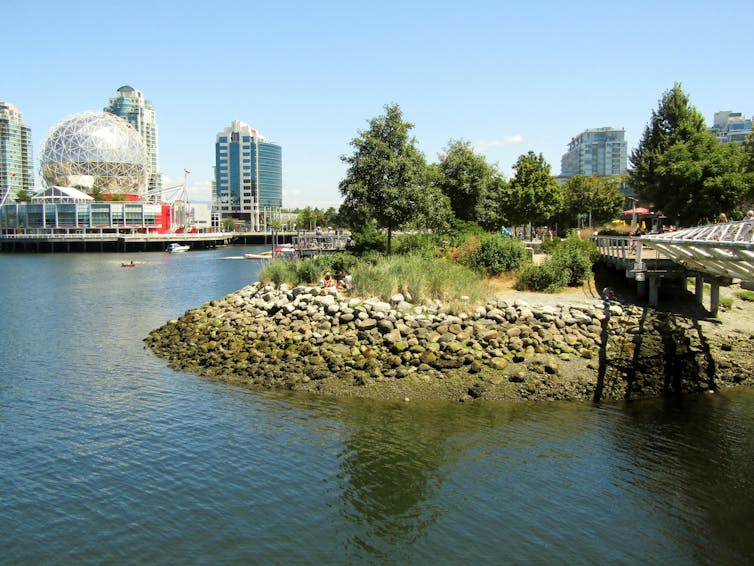Source: The Conversation – Canada – By Dorit Naaman, Alliance Atlantis Professor of Film and Media, Queen’s University, Ontario
Film festivals are unique cultural institutions, spaces to see diverse films by local and global filmmakers and an important market for distributors. These films are often difficult to see, or even know about, outside of festival circuits.
Festivals are also answerable to funders and to different stakeholders’ interests. Cancellations of planned films raise questions about festivals’ roles and accountability to community groups who find certain films objectionable, the wider public, politicians, festival sponsors, audiences, filmmakers and the films themselves.
In September 2024, The Toronto International Film Festival (TIFF) faced a backlash from pro-Ukrainian groups — and former deputy prime minister Chrystia Freeland, who is of Ukrainian descent — when the documentary Russians at War was included in the program.
The Ukrainian Canadian Congress and other advocates called on TIFF to cancel the film, directed by Russian Canadian Anastasia Trofimova, which they accused of being Russian propaganda.
TIFF did cancel festival screenings after it was “made aware of significant threats to festival operations and public safety,” but once the festival was over, showed Russians at the TIFF Lightbox Theatre.
In November, the Montréal International Documentary Festival (RIDM) cancelled the Canadian premiere of Rule of Stone, directed by Israeli Canadian director Danae Elon. As a film and media professor, I supervised Elon’s research for the film while she pursued a master’s degree at Queen’s University.
RIDM acknowledged Elon’s “personal commitment to criticizing and questioning the state of Israel” through her story about the stone that, by Israeli law, has to be used on the exterior of every new building in Jerusalem.
In the film, Elon examines how, in post-1967 Jerusalem, “architecture and stone are the main weapons in a silent, but extraordinarily effective colonization and dispossession process” of Palestinians.
As a documentarist and a researcher in Israeli and Palestinian media representations of fighters, I have analyzed both films and followed the controversies. Each focuses on contemporary political issues relevant to our understanding of current affairs.
While the reasons for the cancellations are different, in both cases the festivals responded to pressures from community groups, placing the public right to a robust debate at the festival and beyond as secondary.
‘Russians at War’
Director Anastasia Trifamova embedded herself in a Russian supply unit, and later a medical team, eventually making her way to the front lines in occupied Ukraine.
Trifamova comes across as a naive filmmaker, using an observational, non-judgmental form of filmmaking common in 21st-century war documentaries, as seen in films like Armadillo and Restrepo (respectively following Danish and U.S. troops in Afghanistan).
As noted by TIFF, Russians was “an official Canada-France co-production with funding from several Canadian agencies,” and Trifamova said she did not seek or receive official permission from the Russian army to film.
The film documents the machination of war, where soldiers are both perpetrators of violence and its victims. It humanizes the soldiers, which understandably can be upsetting to Ukrainian and pro-Ukrainian publics. But should emotions of one group, outraged and incensed as they may be, prevent the public from having the difficult conversations promoted by the film?
Early in the film, Trifamova confronts the soldiers about why they are fighting and they respond with Russian propaganda (fighting Nazism, defending the borders).
Later, soldiers approach Trifamova — on camera — to express doubts about the justification of the war and their presence in Ukraine. The film provides an unflattering view of Russia’s attack on Ukraine, emphasizing the futility of the war and the incredible toll on soldiers and civilians (including some Ukrainian civilians). Russian troops appear untrained and poorly equipped to fight in chaotically managed battles.
Like Armadillo and Restrepo, Russians at War represents the soldiers without judgment and contributes to necessary conversations about war. In my analysis, while Trifamova refrains — in her sporadic voice-over — from condemning the war outright, it is difficult to read the film as Russian propaganda.
While TIFF cited security concerns as the reason for cancellation, security was in place for another film that attracted controversy, Bliss.
A cancellation from such an established festival likely has an effect on how a film is able to circulate. For example, TVO, one of the funders of Russians at War, cancelled its scheduled broadcast days after the TIFF cancellation.
‘Rule of Stone’
Rule of Stone, as noted by RDIM, “critically examines the colonialist project of East Jerusalem following its conquest by Israeli forces in 1967.”
The title references a colonial bylaw to clad building with stone, first introduced by the British, which still exists today.
The film, which examines architecture’s role in creating modern Jerusalem, is led by Elon’s voice-over. It mixes her memories of growing up in 1970s Jerusalem and her reckoning with the “frenzy of building,” which included projects by architect Moshe Safdie, a citizen of Israel, Canada and the United States. Elon recounts that her father, journalist and author Amos Elon, was a close friend of Safdie, as well as legendary Jerusalem mayor Teddy Kolek.
Safdie is among the Israeli architects, architectural historians and planners who Elon interviews. The expansion of Jewish neighbourhoods is contrasted with the restrictions on and disposession of Palestinians in Jerusalem. Multiple scenes show the demolition of Palestinian homes or the aftermath. In intervwoven segments, Izzat Ziadah, a Palestinian stonemason who lives in a stone quarry, gives a tour of what is left of his destroyed home.
Viewers hear how the planning, expansion and building of Jewish neighbourhoods, post-1967, were designed to evoke biblical times. As architectural historian Zvi Efrat notes, the new neighbourhoods look like, or attempt to look like, they were there forever.
As reported by La Presse, the RIDM cancellation came after the festival received information about the documentary’s partial Israeli financing, something that “embarrassed” them with some of the festival’s partners. Funding for the development of the film came from the Makor Foundation for Israeli Films, which receives support from Israel’s Ministry of Culture and Sport.
Two organizations, the Palestinian Film Institute and Regards Palestiniens, opposed the film’s showing on the basis of their commitment to the Palestinian Campaign for the Academic and Cultural Boycott of Israel (PACBI).
In the organizations’ logic, Israel state funding means a film should be subject to boycott as “PACBI specifically targets Israeli institutional funding in the arts which serves to culturally whitewash and legitimize the Israeli state.”
In my view, this position differs from the PACBI guidelines, which state:
“As a general overriding rule, Israeli cultural institutions, unless proven otherwise, are complicit in maintaining the Israeli occupation and denial of basic Palestinian rights, whether through their silence or actual involvement in justifying, whitewashing or otherwise deliberately diverting attention from Israel’s violations of international law and human rights.”
Makor should be exempted since it regularly funds films that draw attention to Israel’s violations of Palestinian human rights. In 2024 alone, the list includes The Governor, The Village League and Death in Um al hiran.
RIDM’s website does not disclose support for a boycott. In the end, RIDM announced that Elon withdrew her film. She stated: “Screening my film at RIDM does not serve the long-term purpose of the festival, nor is it possible now to address the nuances in our common fight for justice for Palestine. I am deeply saddened and distressed by [what] has brought it to this point.”
To date, the film has not found a cinema in Montréal willing to screen it.
Provoking important conversations
The two festivals’ mission statements promise high-quality films that transform or renew audiences’ relationships to the world.
It is clear why programmers chose both films, since they’re cinematically innovative and provoke important conversations.
However, both festivals silenced these films and signalled to other filmmakers that these festivals are not brave spaces to have difficult and necessary conversations.
![]()
Dorit Naaman does not work for, consult, own shares in or receive funding from any company or organisation that would benefit from this article, and has disclosed no relevant affiliations beyond their academic appointment.
– ref. Cancellations at Canadian film festivals raise questions about accountability – https://theconversation.com/cancellations-at-canadian-film-festivals-raise-questions-about-accountability-250892








